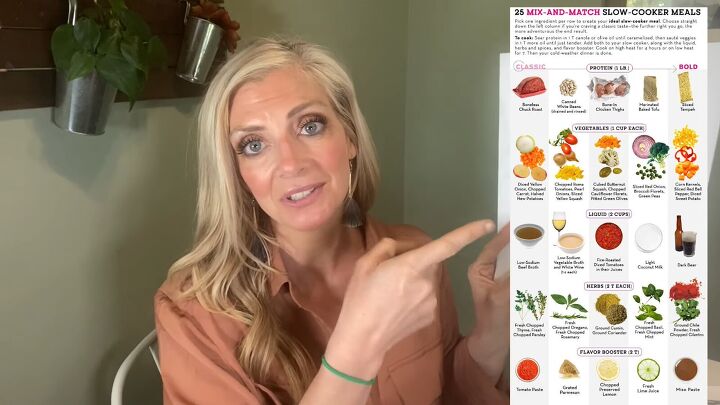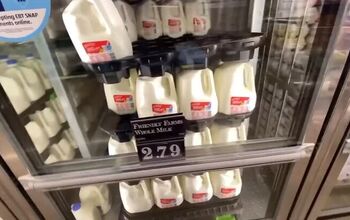How to Save Money on Groceries: Easy 4-Step Plan

Wondering how to save money on groceries, and nothing seems to work? I have developed an original strategy that definitely does.
Here is my simple four-step plan for how to save money on grocery shopping, which has helped me cut my grocery expenses in half. Let’s get started!
1. Setting the budget
Start by calculating how much money you are currently spending on groceries. Go back to your bank accounts for the last three to six months and see exactly how much you have been spending grocery shopping each month.
Unless you are actually on a strict budget already, you are most probably spending way more than you realize.
After you have that number, let's try to cut it in half. A great rule of thumb is $100 per person in your family a month.
Two other great ways to save money on groceries is shopping as little as possible (I only go every two weeks) and shopping online in order to avoid spending money unnecessarily.
You can always choose pickup, so you don’t have to spend extra on the delivery.
2. Inventory
Open your refrigerator and take everything out. This way, it will be clear visually what you already have and what you need to get. Go through it and throw whatever is bad away. Now you are ready to take inventory.
Write down all the products you have according to categories: produce, canned goods, condiments, frozen foods, dairy, protein, and others. You do not have to write down specifically what you have, but write down the type of food.
For example, instead of writing “10 peppers, 10 tomatoes and 10 carrots”, you can just write down how many veggies you have. If you have a lot of cheeses, no need to count them – just write down that you have plenty.
Now that I have been doing this for so long, I don't necessarily even write my pantry inventory list. I can just skip right to the grocery list and fill in the things that I need.
3. Meal planning
You have most probably already heard of meal planning, but I do it differently, so this is where things get interesting.
In the past, I would make a meal plan for the week, and inevitably plans would change for a night or two, I wouldn’t make what I was planning to make, and the food would go bad.
The way I do things now, food doesn't go bad nearly as much, and I have reduced the cost of our grocery bill again by 50-70 percent.
Instead of following traditional recipes, like planning to make spaghetti on Monday and chicken and rice on Tuesday, I use food formulas to mix and match foods.
Food formulas are very loose recipes that allow you to cook spontaneously based on the ingredients you probably already have.
All of us have that aunt or grandma that can make something out of nothing, but if you do not already have that talent, food formulas are the way to go.
I have about 20 that I always use, for example, for mix and match chicken soup, mix and match green wraps, or build your own frittatas.
Here is how a food formula works.
Let’s take a mix and match slow cooker meal as an example. You just pick one protein out of the list, you pick one cup of vegetables, such as onions, tomatoes, squash, and then two cups of any liquid, such as white wine, veggie broth, and beer.
You also need two herbs, and a flavor booster like a lime or a tomato paste. Now I know that any one day of the week I can make a slow cooker meal, and one day I can make pasta.
Using my pantry inventory list, I can decide which food formula meals I will be making in the near future.
Once I decide on five to seven meals, I will know what I need to get at the store.
Food formulas also often help me realize that I can actually still make something, even when it looks like my whole refrigerator and pantry are nearly empty.
4. Choosing and storing foods
Food choices are super important when it comes to cutting costs and your grocery bills. I always look for the longer lasting vegetables, picking root vegetables over others that do not last that long.
Another important thing to consider is how you store your foods. Storing your veggies and fruits in the correct way so they last longer is going to allow you to stretch those foods out and save you even more money. The less times you shop, the more money you will save.
Another way to stretch your food’s longevity is freezing. You can freeze milk, sour cream and so many other items, and of course this will make them last longer than in the refrigerator.
Another wonderful tip is using a handy substitution chart. This is what will help you at the point where you are about to go shopping again, and you are really out of food. Use a substitution chart to find a substitution for that one item that you are lacking for your food formula.
How to save money on groceries
This is our unique and revolutionary way of grocery shopping that has cut our grocery bill in half. I hope you will give this amazing strategy a try, since this is really the best way to save money on groceries.
Definitely let me know how this works out for you in the comment section below, and if you have any other good tips to save money, leave them there as well!






















Comments
Join the conversation